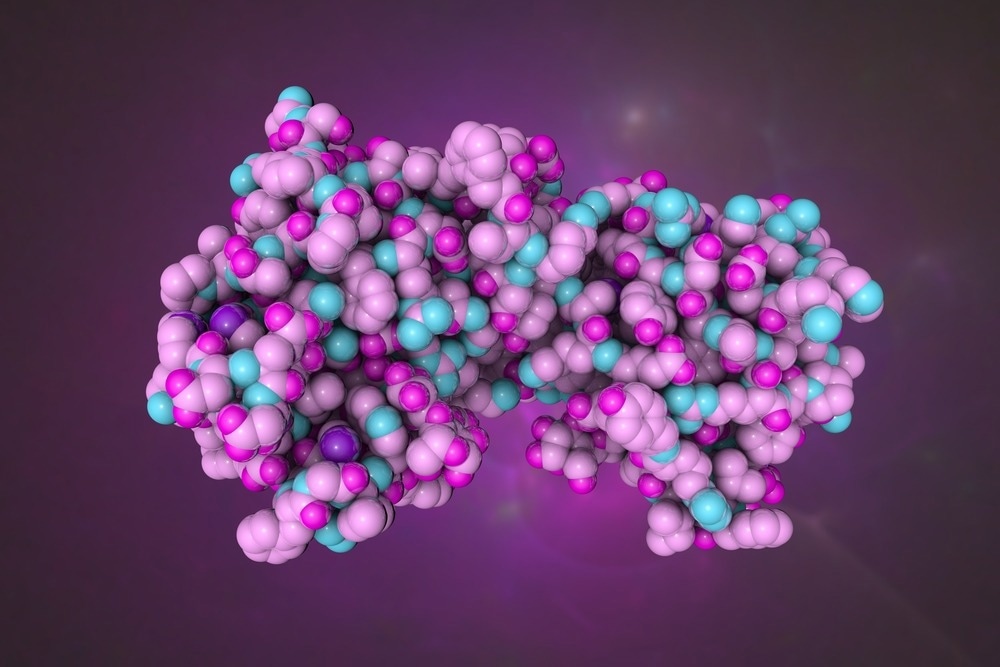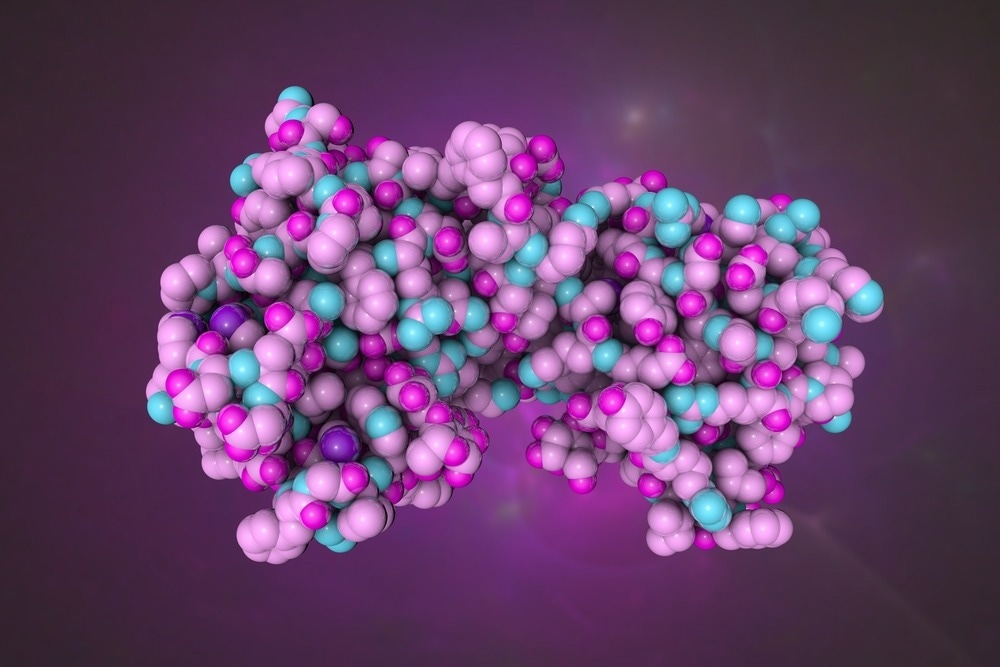In a recent review published in Nature Reviews Immunology, researchers explored ways galectins can impact immunity and discussed the opportunities and challenges in the field.

Background
Galectins comprise carbohydrate or glycan-binding proteins that are expressed by several types of cells and bind with galactose-comprising glycans. Galectin molecules can be situated within the cytoplasm or the nucleus or can be secreted extracellularly. They can modulate innate and adaptive immunological responses dependent or independent of carbohydrate-based interactions.
In the present review, researchers explored galectin-mediated immunological regulation.
Galectin molecules as unique host immune response regulators
Galectins may be categorized as chimera-type, tandem-repeat-type, and prototypical galectins, based on their structures. Of importance, the glycan adjustments in cellular surface proteins could be altered after the activation and differentiation of cells, resulting in the engagement of galectins of different glycolipid or glycoprotein targets and, thus, differing outcomes of signaling pathways.
Among immunological cells (innate immunological cells including dendritic cells and macrophages, and adaptive immunological cells including B lymphocytes and T lymphocytes), the immunological interactions could affect cellular activation, secretion of cytokines, chemotaxis, and the fate of cells.
Galectins are present or secreted within the cytoplasm but can also be located in the nucleus. Cytoplasmic galectins could affect cell signaling by being directly bound to intracellularly located molecular targets, including ALIX (ALG2-interacting protein X) and BCL-2 (B-cell lymphoma protein-2) via interactions independent of glycans. The interactions could affect cellular survival, autophagy, and phagocytosis. Intracellularly located galectins can be bound to exposed carbohydrates subsequent to the damage of organelles, which induces autophagy.
Adaptive immunological response modulation by galectin molecules
Galectin molecules can regulate adaptive immunological cells via extracellular and intracellular mechanisms and effects on APCs (antigen-presenting cells) and other cells of the innate immunity system. Extracellularly located galectin-3 proteins can regulate T lymphocyte activation via engaging extracellular carbohydrates on the cluster of differentiation (CD8) co-receptors and other glycoconjugates that limit CD8-TCR (T cell receptor) interactions and CD8-MHC (major histocompatibility complex) class I interactions at the immunological synapse.
The CD8 activity restriction is regulated by MGAT5 (β1,6-N-acetylglucosaminyltransferase V), an enzyme induced by interleukin-10 (IL-10) that catalyzes the production of N-glycan molecules with polylactosamine-type ligands of galectin. Intracellularly located galectin-3 protein could increase the TCR activation threshold, and galectin-9 has shown opposite effects.
Immunology eBook

A defect in T lymphocyte contraction has been observed among galectin-1, galectin-8, and galectin-9 knockout murine animals post-challenge, with T cell apoptosis post-administration of extracellular galectin-1, galectin-2, galectin-3, galectin-8, and galectin-9. Additionally, intracellularly located galectin-3 induces the apoptosis of T lymphocytes via BCL-2 interactions.
Galectins can also regulate the differentiation of B lymphocytes via extracellular pathways and probably intracellular pathways. E.g., galectin-3 protein knockout B lymphocytes have shown an increased proclivity of differentiating to form plasma cells and germinal center (GC) B lymphocytes that secrete immunoglobulin G3 (IgG3) or IgG2c, which may increase the chances of autoimmunity.
The galectin-9 protein can cause CD-22,45 transmembrane protein-BCR (B cell receptor) interactions and resultant decreased BCR signaling. Contrastingly, B lymphocytes present in germinal centers secrete carbohydrate antigen I that decreases galectin-9-facilitated and CD-22,45-mediated B lymphocyte signaling inhibition and increases B lymphocyte responses to antigen exposure.
Regulation of macrophages by intracellular and extracellular galectins
Galectins can affect macrophage polarization, phagocytosis, and inflammasome activation. E.g., galectin-3 is induced among cardiac macrophages in myocardial infarction models, where it promotes their polarization into M2-like macrophages, contributing to tissue repair by promoting fibrosis and clearance of apoptotic cells after myocardial infarction. Galectin-3 expression is induced via STAT3 (signal transducer and activator of transcription 3) activation.
IL-4 also induces galectin-3 expression, and galectin-3 facilitates M2-like macrophage polarization by binding to CD98, which induces PI3K (phosphoinositide-3-kinase). Galectin-12 is also expressed by myeloid cells and positively regulates M1 macrophage polarization in response to LPS (lipopolysaccharide) treatment in relation to lower NF-κB (nuclear factor kappa B) activation and resultant M1 polarization. Additionally, intracellular galectin-3 positively regulates NLRP3 (NLR family pyrin domain containing 3) inflammasome, macrophage phagocytosis, and actin rearrangement.
Galectins as sensors for endolysosomal damage
Cell organelles can be disrupted by intracellular bacteria that secrete toxins into cells. Lysosomal damage can be induced by LLOMe (Leu-Leu-O-Me) and GPN (glycyl-l-phenylalanine 2-naphthylamide). Given that galectin can bind to signaling molecules via non-carbohydrate interactions, this can result in 'signaling platform' formation, induction of autophagic activation, and bacterial destruction.
Galectin-3 and -8 bind to exposed β-galactosides on damaged membranes are associated with TRIM16 (Tripartite motif-containing protein 16), and trigger autophagy. Galectin-8 activates autophagy mechanisms by mTOR (mammalian target of rapamycin) inactivation. Galectin-9 binds to glycoproteins on damaged lysosomes resulting in USP9X inhibition, activation of TAK1 (transforming growth factor- β -activated kinase 1) and AMPK (AMP-activated protein kinase), and autophagy.
Conclusion
Based on the review findings, galectins can modulate immunological cell functions by binding with key cell surface receptors. However, further research is required to validate galectin functions and mechanisms and investigate the proteins' potential therapeutic significance.
- Liu, F. and Stowell, S. (2023) "The role of galectins in immunity and infection", Nature Reviews Immunology. doi: 10.1038/s41577-022-00829-7. https://www.nature.com/articles/s41577-022-00829-7
Posted in: Medical Science News | Medical Research News | Disease/Infection News
Tags: Actin, Antigen, Apoptosis, Autoimmunity, Autophagy, B Cell, B Lymphocyte, Bacteria, Carbohydrate, Cell, Cell Signaling, Cytokines, Cytoplasm, Enzyme, Fibrosis, Galectins, Glycan, Glycans, Glycoprotein, Growth Factor, Immune Response, immunity, Immunoglobulin, Immunology, Inflammasome, Interleukin, Intracellular, Kinase, Knockout, Lymphocyte, Lymphoma, Lysosomes, Macrophage, Myocardial Infarction, Phagocytosis, Phenylalanine, Protein, Rapamycin, Receptor, Research, Synapse, T Lymphocyte, Toxins, Transcription

Written by
Pooja Toshniwal Paharia
Dr. based clinical-radiological diagnosis and management of oral lesions and conditions and associated maxillofacial disorders.
Source: Read Full Article
